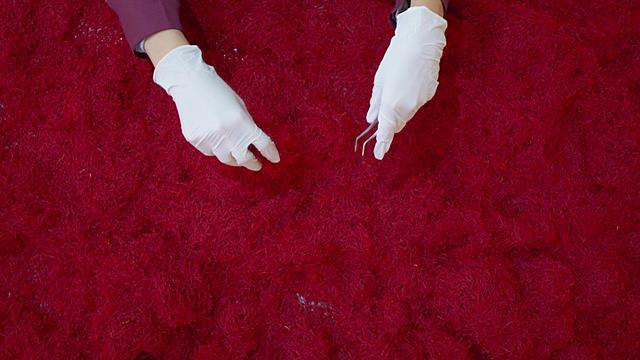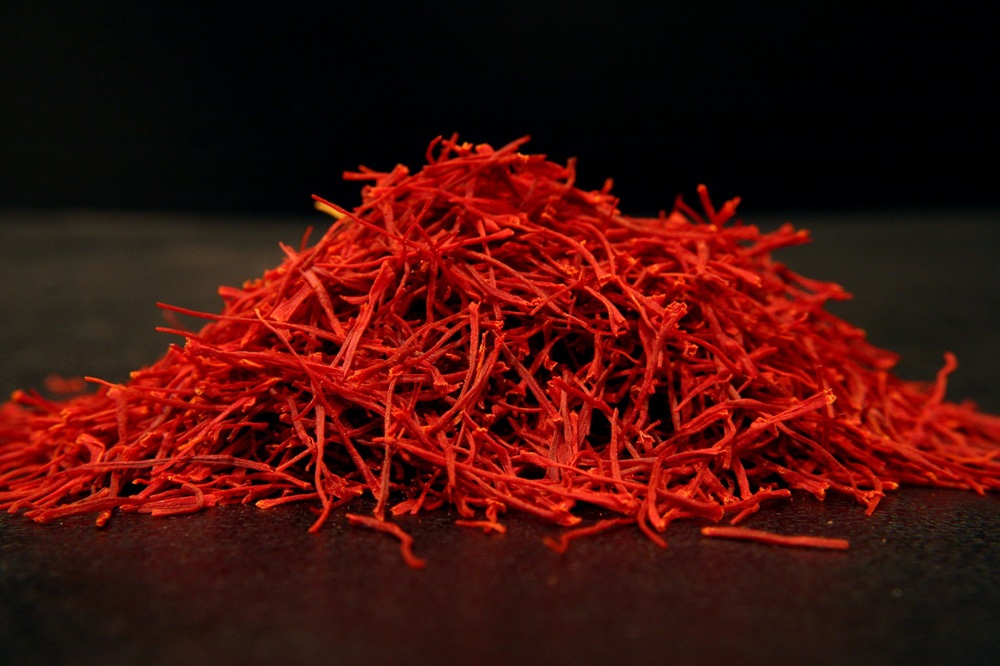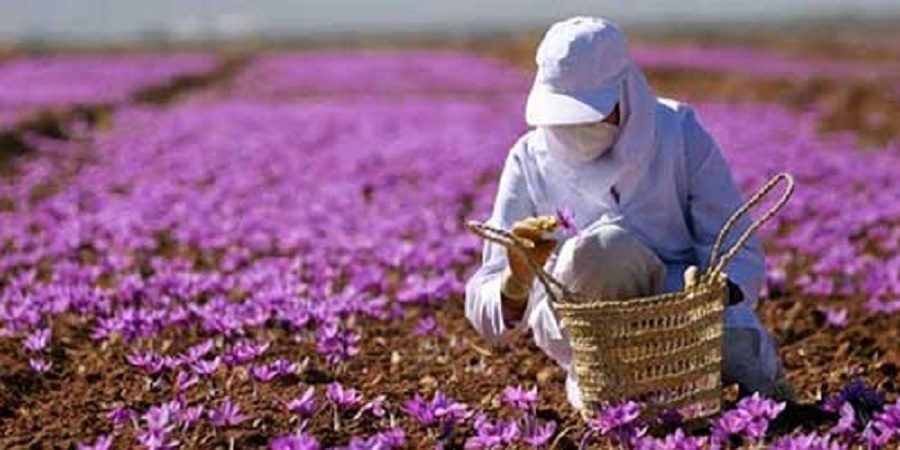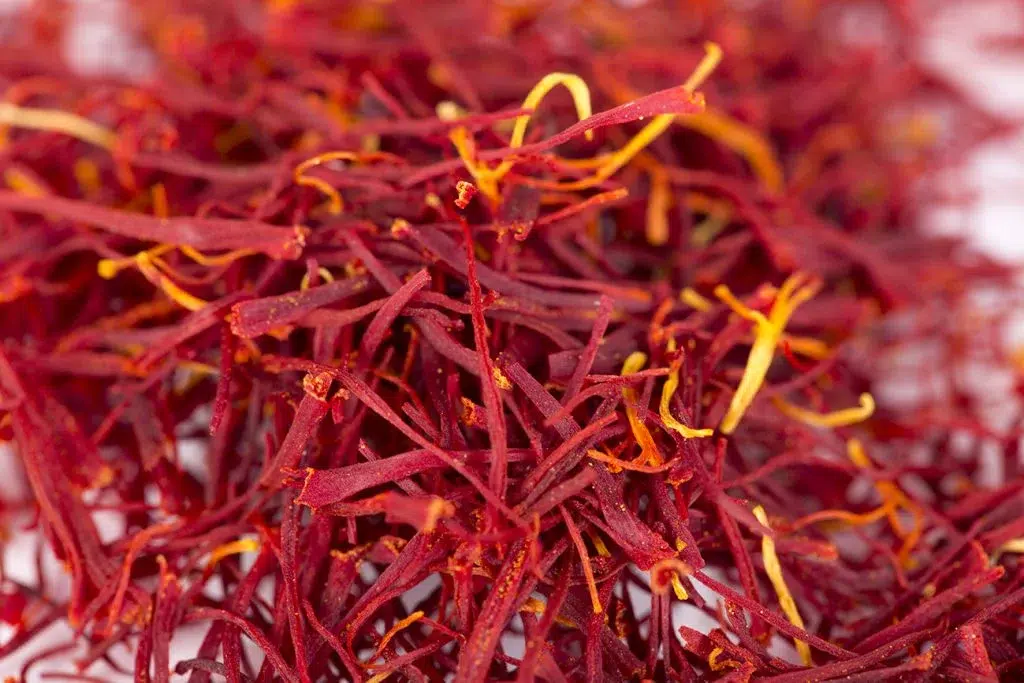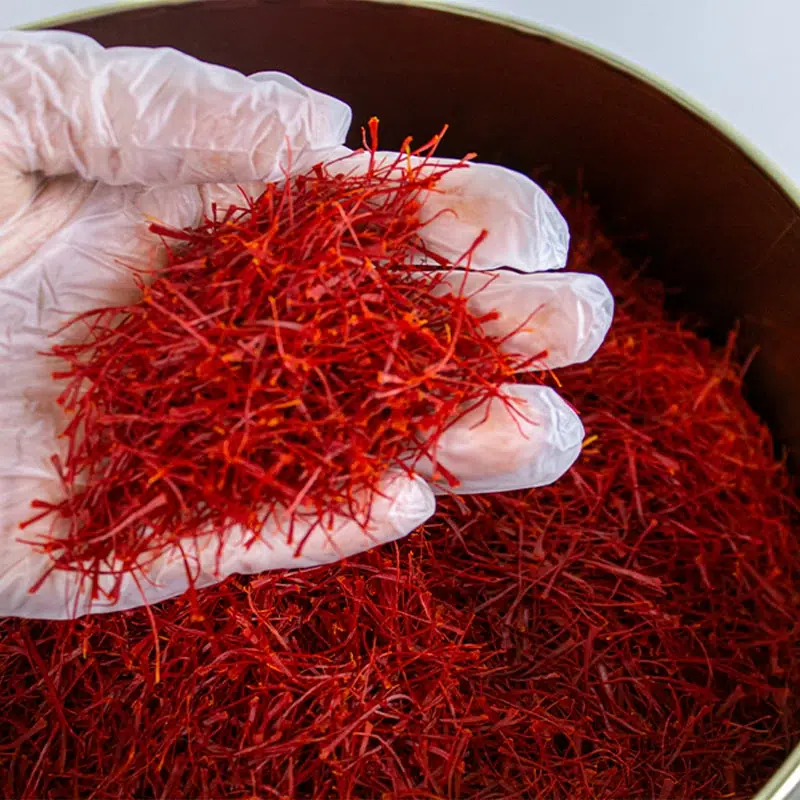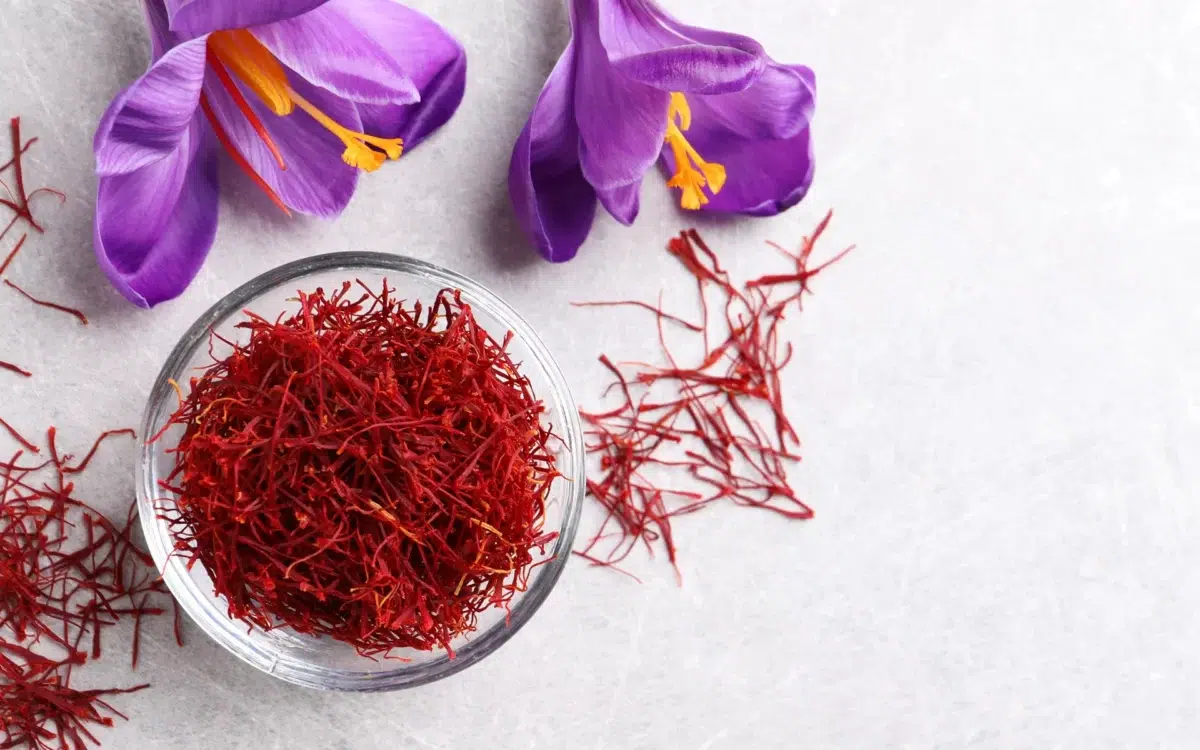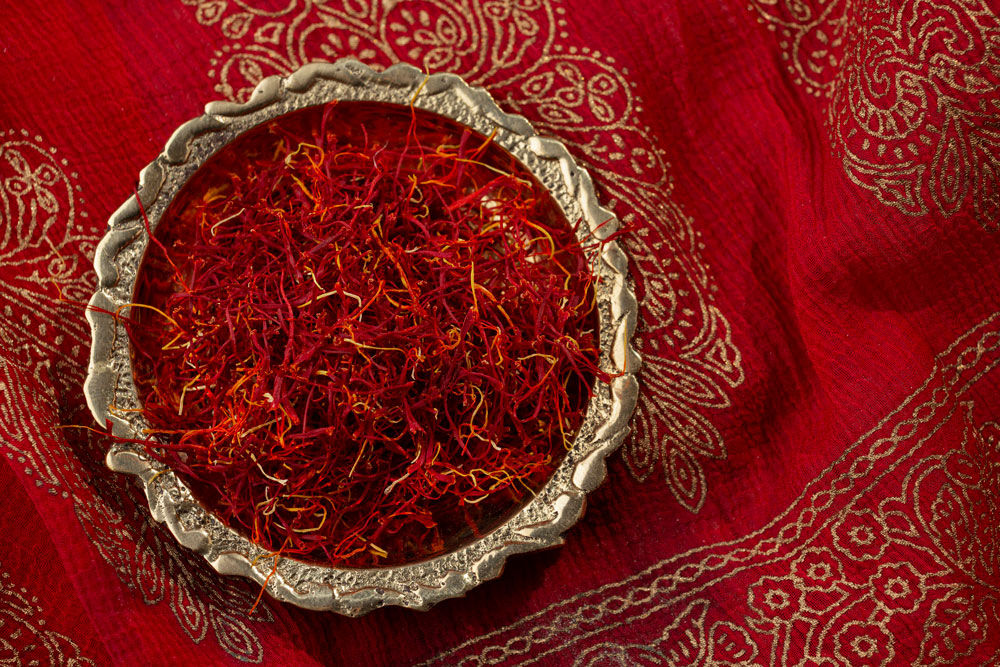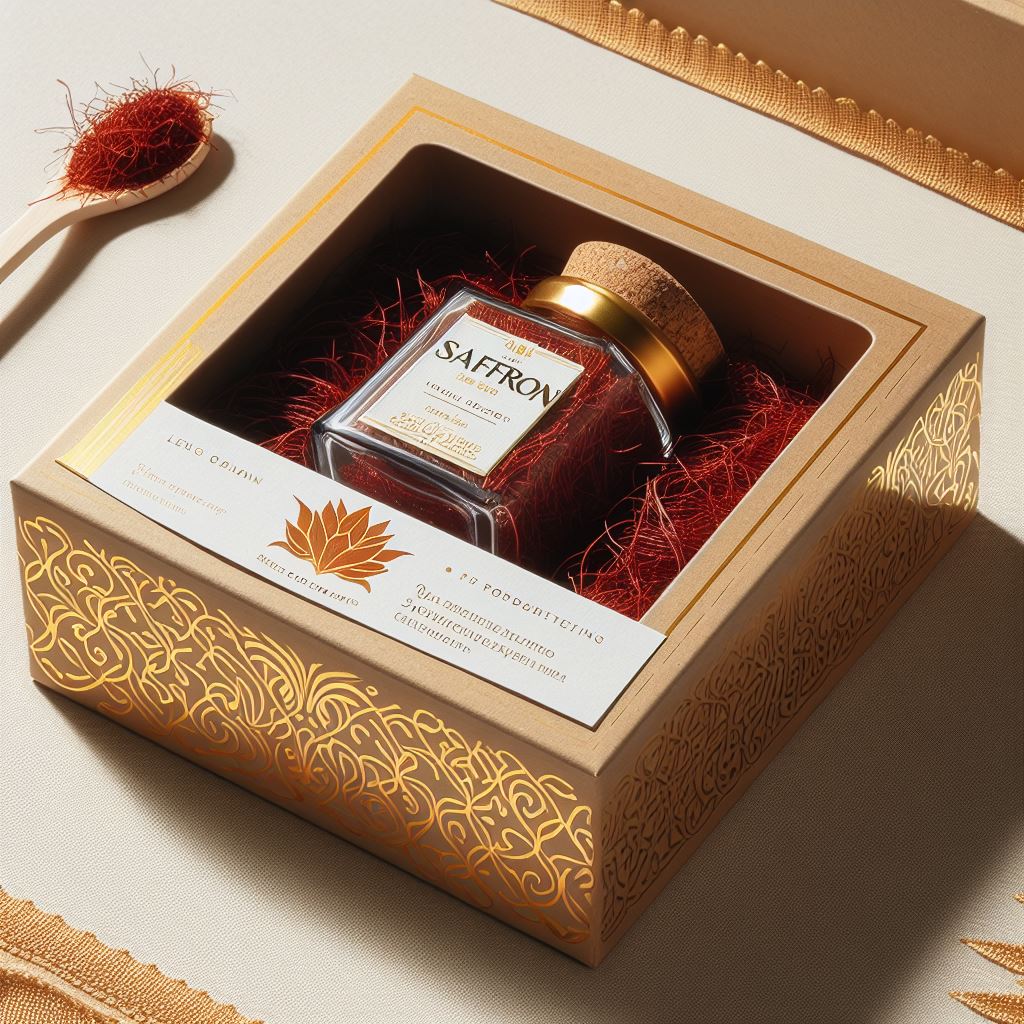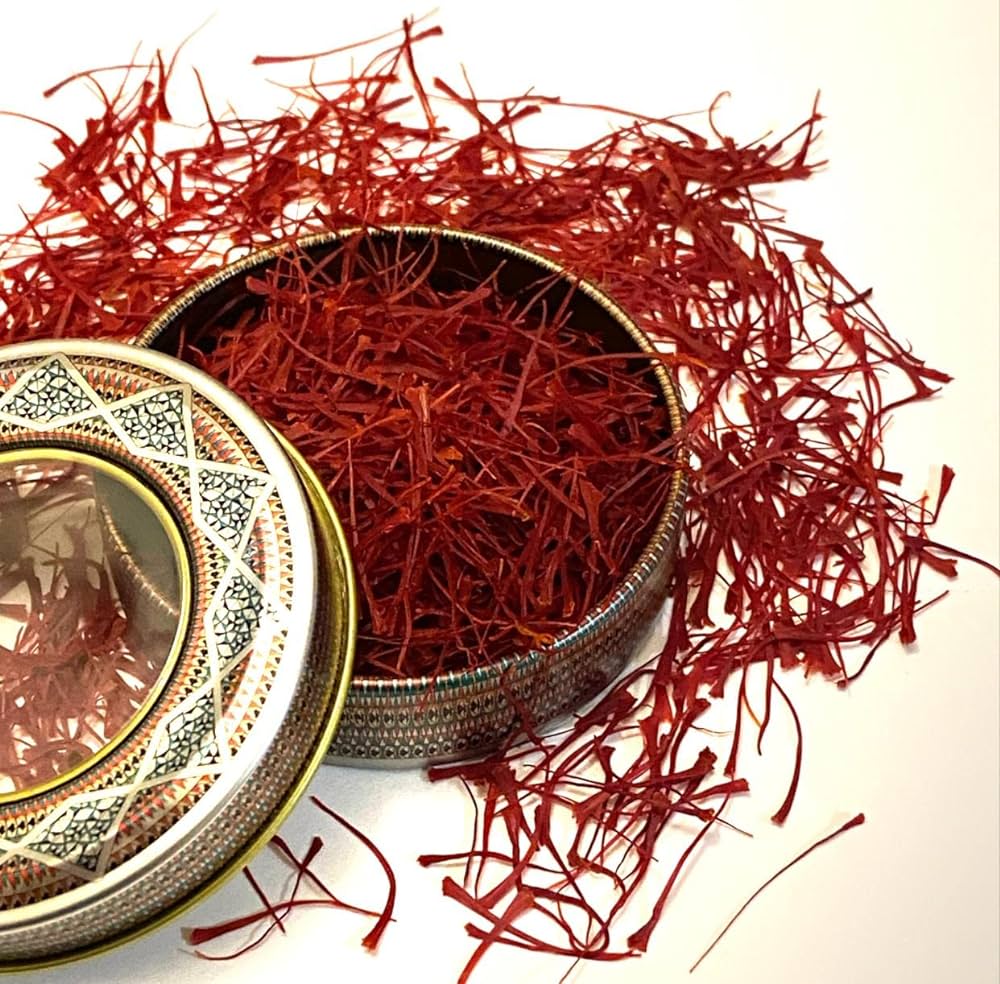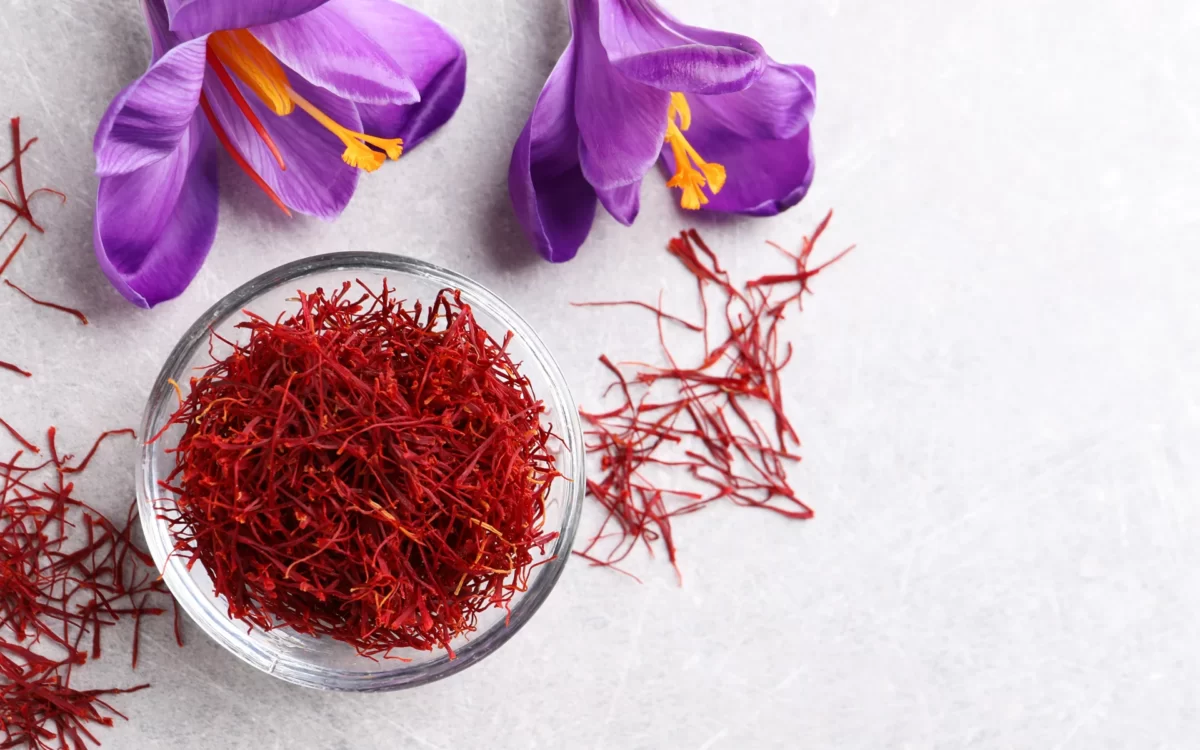Saffron is the most expensive spice in the world, going for up to $16 per gram—and with good reason. It comes from the dried bright orange-red stigmas of the flower Crocus sativus.
But before you go digging up your spring crocus, know that this variety is special because it’s a triploid: it can’t grow in the wild or reproduce without human intervention. The gorgeous purple flower is painstakingly propagated and harvested by hand, and only on the morning it blooms. The more careful the cultivation, the higher the price.
Iran produces 85 percent of the world’s saffron, according to the UN Food and Agriculture Organization, thanks to its relatively dry, sunny climate and the agricultural knowledge passed down through generations of farmers. It likely was first discovered in Bronze Age Greece, yet it now grows throughout Europe and Asia.
Saffron is as old as time. Cleopatra was said to bathe in saffron-infused mare’s milk before seeing a suitor. “Saffron was used to dye the woolen bolero jackets worn by Minoan women; also in cosmetics, where it was mixed with red ochre, tallow, and beeswax to make lipstick,” says John O’Connell in The Book of Spice: From Anise to Zedoary. Medieval monks found that mixing a primitive glue of egg whites and saffron created a yellow glaze that could stand in for gold in the production of their manuscripts.
And I dare you to make a Spanish paella or a Persian pilau without the metallic zing and dayglow yellow punch of saffron. Same for dozens of styles of fish stew, yeasted rolls, cakes, and pies found around the world.
Saffron has been used historically to treat everything from heartache to hemorrhoids by traditional healers. Modern studies have shown the high levels of antioxidants found in saffron may help ward off inflammation in the body and that it may be helpful in treating sexual dysfunction and depression, but the jury’s still out on its reported effects on cardiovascular disease and cancer.
Saffron was once spread like hay to freshen Roman public spaces and was even prescribed as an antidote for the bubonic plague, according to the beautifully illustrated The Herball, or Generall historie of plants, by John Gerarde, published in 1597.
Its popularity may have peaked in the Middle Ages as a medicine, but this was also a time when coloring food, particularly food for a feast, was in vogue. A recipe for swan from Le Viandier de Taillevent, a cookbook published in 1300, calls for a rather graphic skinning of the bird, then cooking it on a spit. Once the bird is on the fire, you must “glaze it with saffron; and when it is cooked, it should be redressed in its skin, with the neck either straight or flat. Endorse the feathers and head with a paste made of egg yolks mixed with saffron and honey.”
Saffron still evokes affluence and elegance in any dish. Luckily, a tiny bit goes a long way.

